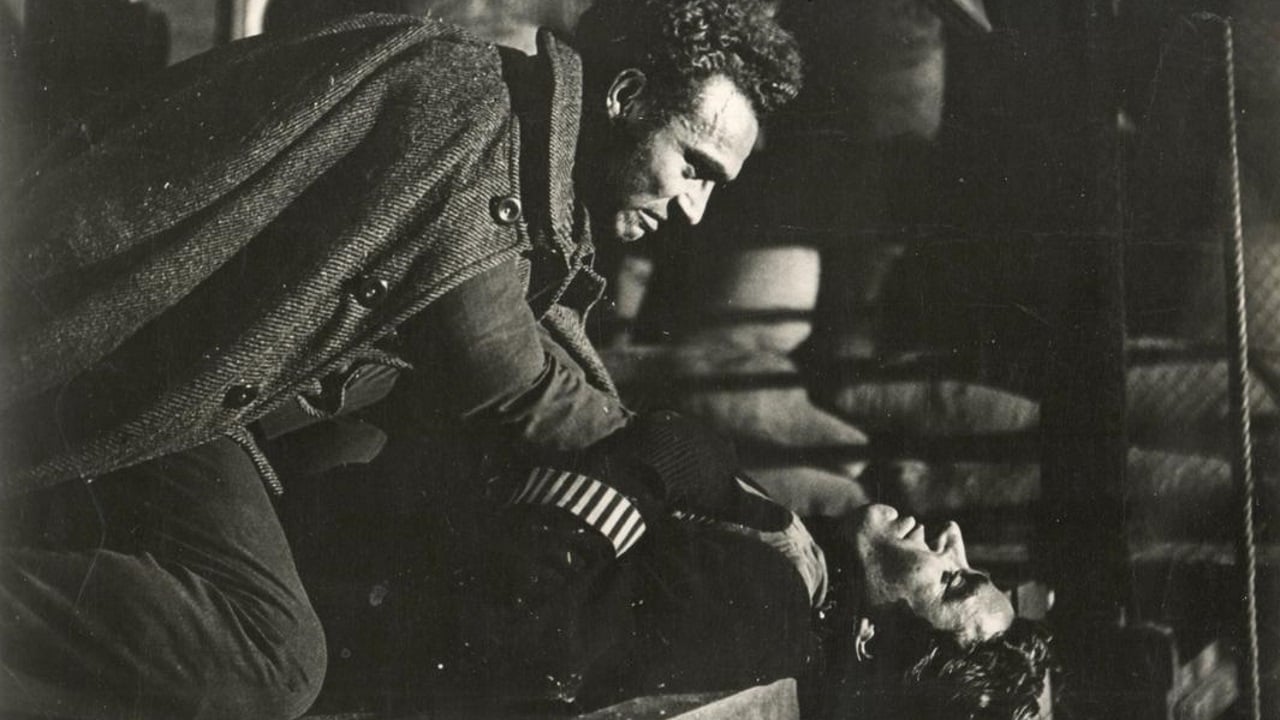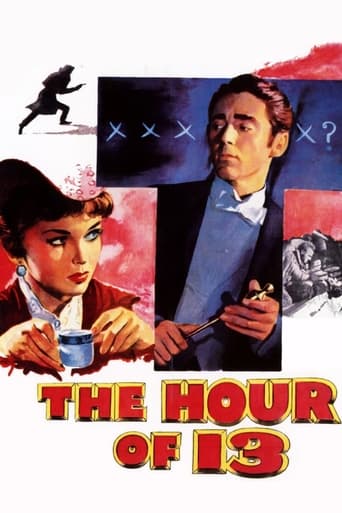

People are voting emotionally.
... View MoreOne of the best films i have seen
... View MoreClever and entertaining enough to recommend even to members of the 1%
... View MoreThe plot isn't so bad, but the pace of storytelling is too slow which makes people bored. Certain moments are so obvious and unnecessary for the main plot. I would've fast-forwarded those moments if it was an online streaming. The ending looks like implying a sequel, not sure if this movie will get one
... View MorePhotographic effects: Tom Howard. Music composed and conducted by John Addison; played by Royal Philharmonic Orchestra. Produced by Hayes Goetz (pronounced "Gets"). Copyright 19 September 1952 by Loew's Inc. A Metro-Goldwyn-Mayer picture. New York opening at the Little Carnegie: 27 October 1952. U.S. release: November 1952. U.K. release: 8 December 1952. Australian release: 21 November 1952. 7,031 feet. 79 minutes. Censored by one minute in Australia in order to gain a "G" Certificate.SYNOPSIS: In 1890, London is shocked at the number of murders of policemen taking place in varied sections of the city. They are always advertised beforehand by a postcard sent to Scotland Yard and signed "The Terror". On the day that the newspapers announce the murder of the eighth policeman, Nicholas Revel (Peter Lawford), an insurance assessor named MacStreet (Colin Gordon), and Ernie Perker (Leslie Dwyer), a hackney cab driver, conspire to steal the immensely valuable Calgurie Emerald at a society ball given by its owner, Mrs. Chumley Orr (Heather Thatcher). The ball is an important affair for other people besides Revel and his accomplices because Jane (Dawn Addams), daughter of the Commissioner of Scotland Yard, Sir Herbert Frensham (Michael Hordern), had decided that her engagement to Captain Sir Christopher Lenhurst (Derek Bond) will be announced there. Revel succeeds in stealing the emerald, but makes one blunder. Having hidden the jewel, he throws its chain and clasp out of a window and it lands at the feet of the ninth of the "Terror's" victims. Thus, when the police find the body, they associate the murderer with the robbery.COMMENT: Good thriller, smoothly directed and agreeably acted — a bit disappointing though for a Philip MacDonald work and the director could have made more play on the suspense and mystery element of "The Terror".OTHER VIEWS: When Dawn Addams stepped before the cameras in England for her role opposite Peter Lawford in M-G-M's mystery-thriller "The Hour of 13", it marked a gratifying moment for the attractive young actress. It was little less than two years ago when Miss Addams first set foot in Metro's London studios to be tested for the role of Judy Miniver in The Miniver Story. Although her test was praised the role subsequently went to Cathy O'Donnell.After that disappointment, Miss Addams went to Hollywood, where she made another test for M-G-M and this time was signed to a long-term contract. She made an auspicious debut as the young college girl who became involved in an auto smash-up with Ray Milland in "Night Into Morning", and followed with the role of Richard Anderson's fiancée in "The Unknown Man". She was next be seen as a member of the all- star cast in "Plymouth Adventure".Born in Suffolk, England, Dawn spent the first five years of her life in India, where her father was stationed with the Royal Air Force. During the war years she lived for a time in England, was evacuated to Wales, spent two years in the United States, then returned to England in 1945. She subsequently studied at the Royal Academy of Drama in London and won her first stage role at the famed Drury Lane Theater. - MGM publicity.
... View MoreThis film features quick, effective editing of sometimes rapid-fire scenes that were obviously well thought out and sequenced with care. The black and white cinematography is good and I believe the whole production is finely crafted. The potential for any real emotional depth of feeling is somewhat stifled overall by the recurring criminal murder subject matter, which is persistently heavy and serious throughout the movie. However, the related jewel thief angle is lighter in tone and is done in an intricate cat-and-mouse manner that I really enjoyed.After the early pretty-boy stage of his career delivering Technicolor "first kisses" to teenage actresses and such, and before his post- 1960 period of boozy hipster parts culminating in his final downward spiral into drug abuse and drunkenness, Peter Lawford did a lot of TV and made some films on both sides of the Atlantic including this one. In "The Hour of 13" (a title of significance to the story, to be explained late in the film) Lawford portrays a charming jewel thief. He does a workmanlike job, is very charming and handsome as always, and is fine as long as you don't stop to ponder how superbly Rex Harrison would have played the part. Dawn Addams is perfectly cast as the intelligent, classy daughter of Michael Hordern's Scotland Yard inspector. Other first rate British actors contribute solid performances.The Victorian London streets, fog and ambiance are well done. The era is depicted as a real time and place, not a nostalgia trip, and is devoid of any mimicry or denigration of Victorian stereotypes.The general viewer will probably enjoy this film as I did if they can appreciate older, very British movies and are interested in seeing Peter Lawford at this stage of his career.
... View MoreJust saw this film for the first time since it's release in 1952. I was 10 years old then and quite enjoyed it. I must say that it has held up pretty well. No great entry in the Victorian, foggy street mystery genre, but it keeps ones interest throughout.This movie, by the way, was shot in MGM's British studio and features a fine line up of English actors who turn in typically solid performances.One more thing: this was by no means one of MGM's major productions for 1952. In fact, it pretty much qualifies as a B movie (except for running time); that is, a second, and cheaper, feature on a double bill. By 1952, the traditional B movie (as opposed to pictures that merely had lower budgets than the headlining A efforts) had just about disappeared. Soon, virtually all movies could be classed as A pictures, with the possible exception of the shoestring productions by little companies that often ended up at the local drive-in.My point is this: studios such as MGM, when they consciously turned out the 60-65 minute movies that were shot in a couple of weeks at most, still maintained a fairly high standard of quality. One can think of the Val Lewton horror films at RKO-Radio Pictures or. . . well, or "The Hour of 13!"
... View MoreThe theft of an emerald coincides with a policeman's murder by a serial killer in "The Hour of 13," starring Peter Lawford, Dawn Addams, Roland Culver, and Derek Bond. Lawford stars as Nicholas Revel, an attractive young man in league with a ring of thieves that steals jewels and then gives them back to the insurance company and collects the reward. Unfortunately, "The Terror," a murderer who targets the bobbies of London, has just struck his latest victim on the property Revel is inside robbing. The police assume the murderer also stole the emerald. Revel needs to solve the case, or help the police solve it, so that the stone can be delivered without anyone being arrested. Scotland Yard becomes suspicious.Peter Lawford is plenty dreamy-looking in this film and his speaking voice is devastating. What a shame he was content to drink, hang with Frank, and play "Password." He was really something."The Hour of 13" is entertaining, though no great shakes. Its atmosphere is studio-manufactured and loaded with dry ice for fog effects. If you like the urbane, Raffles type of thief, you'll enjoy this.
... View More